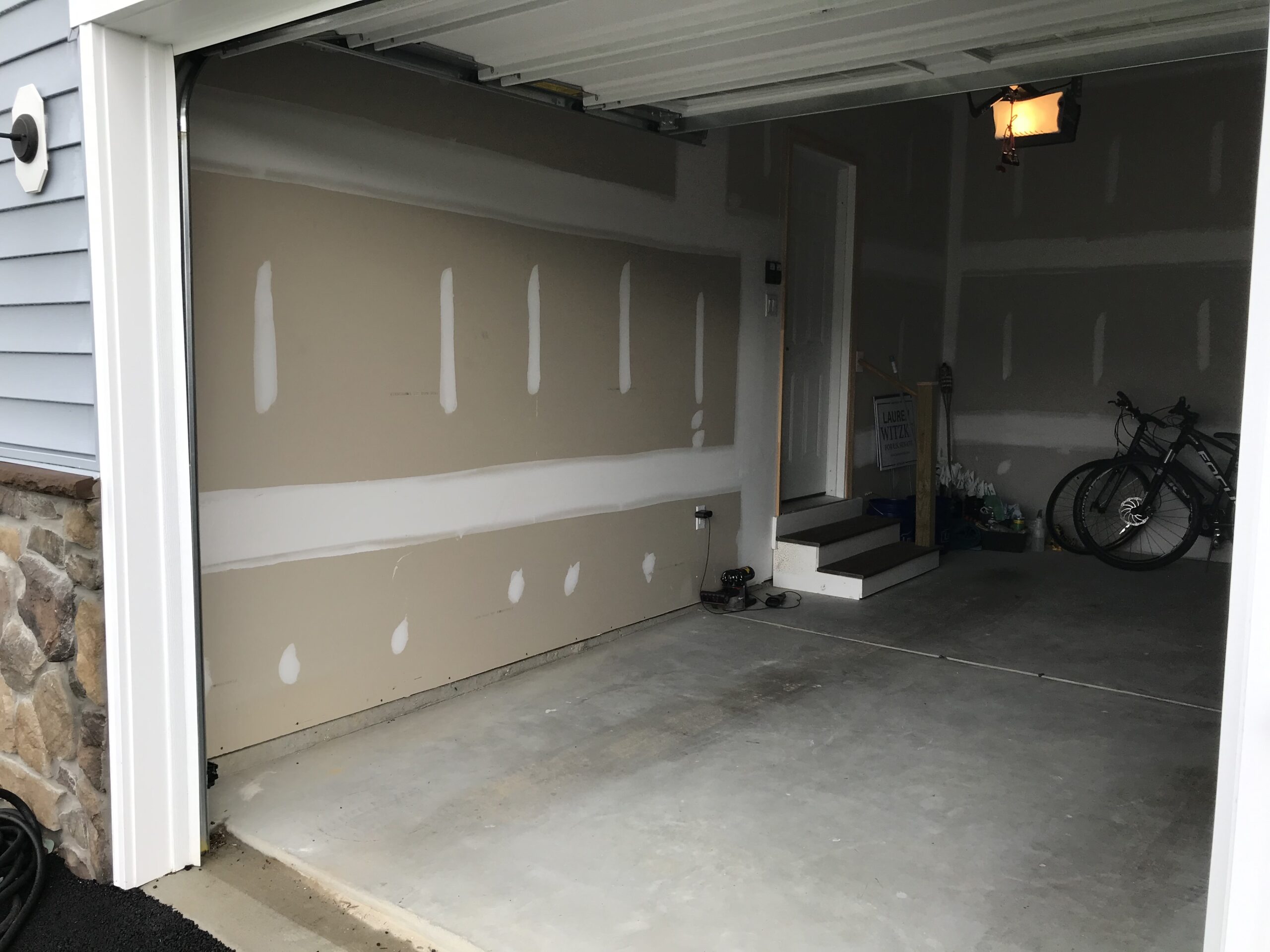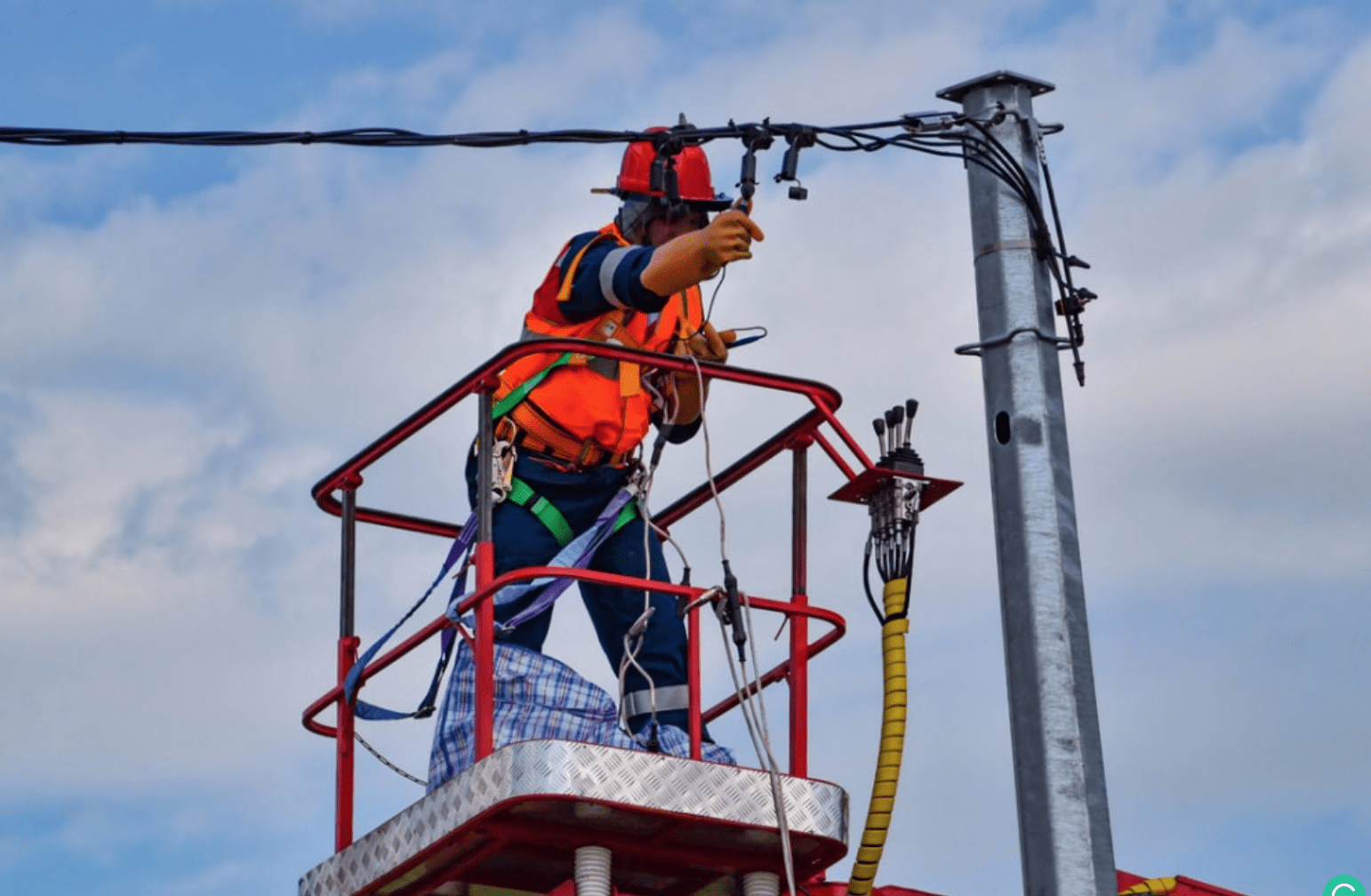For the most part, drywall is typically used to finish walls and ceilings. It’s made out of gypsum material, and because it’s easy to build with, many contractors prefer it to other materials. So, while drywall is a favorite among the pros, a question remains, should I put drywall in my garage?
After I figured out why garages are not painted, I now need to decide what to do about it. As bad looking as I thought this was, it could have been worse without drywall. This article shows my research and thoughts on the topic.
Benefits of Drywall
Whether or not you should put drywall in your garage mostly depends on what you plan to use your garage for. If you just want to park your cars, maybe it is just fine as it is. But I now know that most homeowners, at least in Delaware, don’t use their garages to park their cars. Some use them as extra storage space, in which case, it may not make sense to install drywall either. However, if you are a hardcore DIY person or are just planning on working in your garage, consider some of the following benefits of installing drywall.
Noise Reducer
The soundproofing materials you may need in your garage will depend on your garage’s noise level and construction. But you can make your house a lot quieter with some simple drywall. However, to make it truly soundproof, you may have to use special framing methods that reduce the sound transmission rating (STC) of walls.
Brighter Space
Assuming you paint the drywall white or other light color, it will add brightness to your garage. Light colors will make the garage look bigger because they reflect more of that natural sunlight.
Your garage probably already has some type of fluorescent lighting. But even fluorescent light can be pretty inefficient without some light paint on those drywalls.
More visibility is always a benefit in your garage, which gets significantly less light than other areas of your home. Again, if you’re someone who plans on working out of your garage, the more light, the better.
Temperature Control
If you are like me, you don’t like too cold or too hot. Installing drywall in your garage is also another great way to keep your garage climate-controlled. It can help keep heat trapped, which is great during the winter months. Even in hot summer months, drywall can keep the AC from escaping from your garage.
As a result of controlling the temperature, you should also be able to save some money on your utility bills.
Fire Protection and Increased Structural Integrity
Many people use their garages for storing flammables, such as gasoline or paint thinners. If you add drywall to your garage, it will increase its structural strength and serve as an additional layer of protection against fire.
May Help Sell Your Home Faster
While adding drywall to your garage will not likely increase the value of your home, it may increase its appeal for some prospects. Potential buyers may fall in love with the semifinished garage, especially if you decided to paint it.
By just adding drywall, you are letting potential buyers know of endless opportunities for DIY projects!
Disadvantages of Drywall
Of course, things won’t always be perfect if you decide to install drywall in your garage.
Moisture Issues
Drywall can trap moisture, and it can cause your garage to dampen and potentially cause the growth of mold. Luckily, this issue can be easily solved by purchasing a dehumidifier and using it regularly in your garage.
Prone to Damage
Another common issue with drywall is that it is not damage-proof. This means that you may often find yourself dealing with cracks and holes in the drywall that can easily continue to get worse.
You’ll Need Help for this DIY
Lastly, the drywall may not last very long if it isn’t installed by someone who knows what they are doing. Installing drywall is not extremely complicated for a homeowner who has someone to help (the drywall sheets are heavy.) But if it is not installed properly, you will eventually have issues with the joints or tapes that may require repairs.
Cost of Installing Drywall
If you get it professionally installed, you may be looking at a cost ranging from $1,200 to $5,100, materials and labor, according to HomeAdvisor, as of the time of this writing. Below is the breakdown by garage size.
| Number of Cars | Cost |
| 1 | $1,200 – $3,600 |
| 2 | $1,400 – $4,200 |
| 3 | $1,700 – $5,100 |
Things to Consider Before Adding Drywall to Your Garage
You might be eager to get started on your project, but before doing so, you want to make sure that you assess some key things.
Do You Need Extra Framing?
For starters, you will need to figure out whether or not your garage will need extra framing.
Even if your garage already has framing, you may want to add additional framing before getting to work, especially in areas such as the ceiling or the corners of walls. If you have an attic that’s located over your garage, you’ll have to figure out a way to get to it after you drywall your garage.
Electrical Layout Planning
Your electrical is another thing to take into consideration before drywalling your garage. If you plan on using your garage to work, chances are you’ll need some electrical outlets. Try and have a rough idea in your head of how you want your workspace to look so that you know where to install the outlets. Even if you don’t plan on using your garage to work out of, you may still need outlets for things such as light switches, garage lights, security cameras, and more.
Clean Before Installing
Another thing to add to your list is to clean out any corners or small areas of your garage. This is because these areas can attract dust and unwanted pests. Not to mention, installing drywall in a clean area is simply easier, and you’ll likely run into fewer problems.
Consider Insulation
While you don’t have to, many people choose to add insulation to their garage walls prior to installing the drywall. This not only helps to reduce the noise from the outside but can also make your garage more usable year-round.
DIY Preparation
If you’re planning on installing the drywall yourself, be sure that you have all the tools and materials necessary before getting started. Some examples of the tools that you’ll need include a drywall knife, a sanding block, utility knife, power drill, protective goggles, and a dust mask.
As far as materials go, you will want to first research to see what meets code in your specific area. For the most part, you will likely be required to use a fire-resistant material for obvious reasons. You will also need compound mud and drywall tape as well as screws to get the drywall installed.
Tips for Installing Drywall
If you have decided to take the DIY route, chances are that you’ll need all the tips you can get to make sure that you install your drywall correctly. Luckily, drywall is easy enough to install, but these tips will make the installation process a breeze.
Remove Brackets
Be sure that before you start installing your drywall, you remove the brackets that support the garage door tracks. Doing this will make it easier to install the 4-mil poly and ceiling drywall and will make the finished project look neat.
Rent a Drywall Lift
Another tip to making this project a whole lot easier on you is to rent a drywall lift. A drywall lift will make it easy to install drywall to your ceiling. With a lift, you can easily load the drywall sheet onto the lift and swivel the platform until the sheet fits the spot on the ceiling where you’re planning on putting it in. A drywall lift can also be used for walls and isn’t limited to the ceiling.
To Trim or Not To Trim
While you don’t have to, many people finish up installing their drywall by adding a metal trim to the bottom of the wall. This not only makes your walls look more finished but also serves to keep your new drywall from getting damaged. You can purchase these adhesive strips at just about any hardware store.
How to Hang Drywall
If you have never installed drywall, you can watch this video from Lowes to learn about basic drywall installation steps.
Related Posts:



